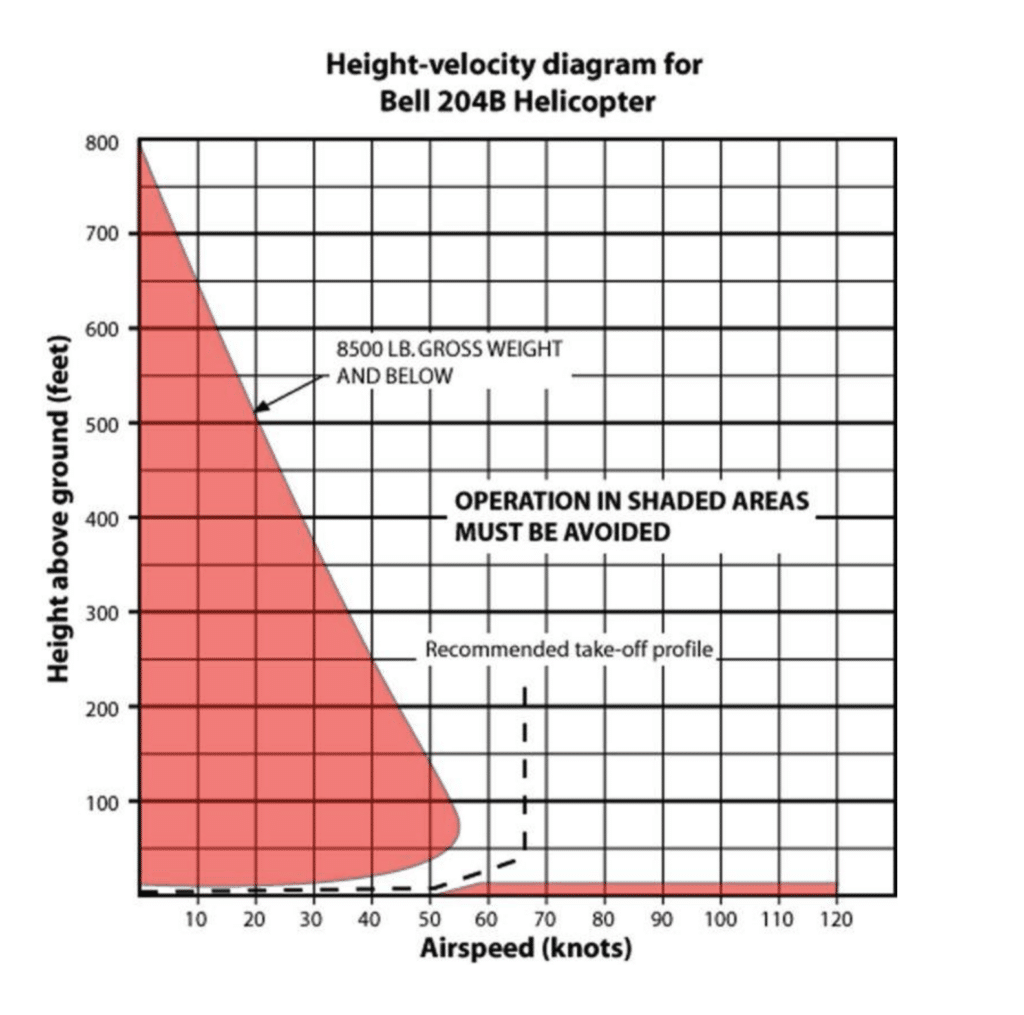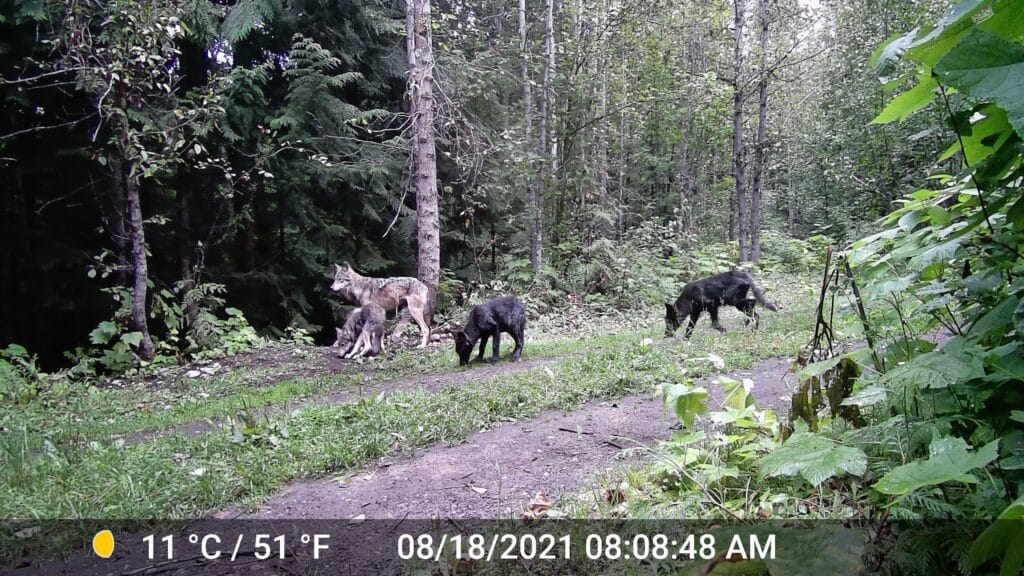Since 2015 the government of British Columbia (B.C.) has killed over 2,000 wolves at a cost of more than $11 million to taxpayers. The Ministry of Water, Land and Resource Stewardship claims this predator reduction program is a last-resort effort to recover endangered caribou populations. At the same time, the government acknowledges that the biggest threat to caribou is the loss of critical habitat, yet it continues to permit industrial activities such as forestry and mining that destroy and fragment the essential habitats on which caribou rely for survival. The B.C. government has consistently assured the public that the cull is supported by science and upholds the ethical and humane treatment of wildlife.
Wolves are killed during the winter months when they are easier to track and chase in the snow via helicopter. Government contractors snipe wolves from the air, and also land to net and collar wolves. They use the collar data from these so-called “Judas Wolves” to track individuals back to their pack so the contractors can kill the rest of the wolf family more easily. The aim of this wolf cull is to reduce wolf populations by 80 per cent, so that there are fewer than three wolves for every 1000km2 of territory.
British Columbians throughout the province are disheartened and disturbed by the provincial mismanagement of both caribou and wolves, and the inevitable devastation this poses to the health and prosperity of ecosystems.
Pacific Wild sat down with wolf advocate and retired SPCA constable, Dale Bakken, to discuss the ongoing wolf cull.
Pacific Wild: Dale, tell us a little bit about your professional experiences and how they relate to your interest in calling for an end to the provincial wolf cull.
Dale: I have four years of helicopter-based research experience, which involved observing caribou and wolves together in northern Manitoba. I’ve obtained 26 years of experience in zoos in three different countries. Other experiences include observing both captive and wild wolf packs, as well as collaborating with my wife, Sandra, on her wolf book, Alone Within the Pack. We were involved with wolf reintroduction to Yellowstone National Park in the 1990’s. For a number of years we worked with Wolf Haven in Washington State.
Additionally, I am proficient in the use of firearms – both rifles and handguns. I have 16 years of experience in law enforcement in animal cruelty investigations for the BC SPCA as a Special Provincial Constable.
For the last 11 years Sandra and I have made our home on a 262-acre property in northwestern B.C.. The property is frequently visited by wolves and other incredible wildlife. Four years ago, we published a trail camera book titled Caught on the Trail: Nature’s Wildlife Selfies, showcasing the native wildlife of B.C.

“Families just like this are being slaughtered by the provincial government.”
Pacific Wild: Wow, What a rewarding career you’ve had around wildlife. You mentioned you had professional experience observing wolves and caribou. Do you believe the reduction of wolves will benefit caribou populations?
Dale: Wolves and caribou have had a long-lasting relationship for centuries. The numbers of wolves and the numbers of caribou remained a constant with little fluctuation until now. After a million years of coexistence, the 21st century has put caribou on the brink of extinction. Why?
It is not the wolves that are the major cause, but the fault of the provincial government for its lack of forethought toward proper ecosystem management. The government is using the wolf as a scapegoat for their own blunders and mistakes that continue.
This wolf cull fiasco all started in 2015 and since then the government has slaughtered over 2,000 wolves at a cost to the taxpayers of over $11 million. Yet the caribou are really no better off under this recovery plan.
Let’s look at other causes of the caribou decline. Continued habitat loss and destruction into critical caribou habitat that is required for breeding, calving and foraging. Loopholes in forestry and permitted logging allows for overlapping five-hectare cutbacks without proper oversight.
Opening up areas with added logging roads and trails allows predators and humans easy access to acres that were once largely inaccessible. Consider those pressures, then pile on climate changes, major wildfires, pine beetle infestation, oil and gas production and expansion, added mining, more winter recreational development, motorised recreation in the backcountry, unregulated access to critical caribou habitat, and modern hunting methods.

The provincial government could make changes to its current approach. What if they closed the loopholes, restricted access to certain critical areas, protected ungulates’ winter range, invested in a caribou breeding facility (as was done by the Alberta government for wood bison), invested $11 million into caribou conservation centres and rehabilitation instead of culling wolves?
The B.C. government needs to find a way to join the world in modern conservation methods.
In 2017 the NDP campaigned on developing a B.C. Species at Risk law, but once elected they began back pedalling their concept. Now, we see only a watered-down draft version of an act that will not protect current B.C. species at risk, but actually harm biodiversity throughout the province. Many independent studies highlight the biggest threat to caribou is continued logging in critical habitat and broken recovery plans.
The wolf cull is nothing but government misdirection on what the real issues are. To quote Paul Paquet, a well-known and respected wolf biologist; “This is wildlife management masquerading as conservation in a cynical effort to avoid doing what is clearly necessary – protect caribou from the ecological harm caused by people and industry.”
Pacific Wild: In a previous FOI (Freedom of Information) request, Pacific Wild was able to obtain 46 images documenting the wolf cull. Dale, we asked you to review those images and provide an independent assessment. Would you mind sharing your findings?
Dale: Based on my review of the graphic content, I believe the 46 images only show a total of 28 different individual wolves killed.
Three images are of no real value at all, as they show dead wolves at a great distance with no information attached.
Sixteen wolves were taken down with one bullet. If the government hand-picked these images for release you would expect they could come up with more than sixteen wolves killed with one bullet out of the almost two thousand they have already killed.
Nine wolves were taken down with two bullets. A number of those were killed later with a secondary headshot.
Thirty-five per cent of the wolves in these images were shot twice, allegedly to end their suffering.
Images showing large amounts of blood indicate a slower death as the heart is still pumping blood.
Many images showed both entry and exit wounds. Thus the bullets passed through the body. Exit wounds were large indicating probably the use of a soft-point bullet.
Many images showed a significant downward angle of the bullet’s travel. Death would have been much quicker if the shooter was on the same horizontal plane as the animal. The bullet would have then travelled through both lungs when shot, not just one lung.
Shooting a moving animal from an unstable aerial platform would make it extremely difficult to make an instant kill shot with only one bullet. This makes me question how many may have been wounded.
The wolf is going to be a constant moving target every time a helicopter is overhead. It is safe to say the government has no real interest in a quick and humane single-shot kill.
Is there documentation stating how many wolves were wounded and ran off? How many wolves were killed with three or more bullets and has that been recorded?
Many images were labelled upon receipt; a head-shot, a lung-shot, a neck-shot, a spine-shot. In some cases, the animal seemed to be shot in the jaw, the stomach and some seemed to miss the spine entirely when labelled as a spine shot.
Pacific Wild: As we’re aware, the provincial wolf cull involves fatally shooting wolves via helicopter. The provincial government claims this is the most humane way to kill wolves. As someone with both helicopter and firearms experience, do you believe this claim to be true? Is it possible to humanely kill wolves via helicopter?
Dale: I spent four years working in the helicopter industry, and have watched wolves and caribou both alone and together from helicopters in northern Manitoba. I’ve fired a capture-net-gun. I also worked for sixteen years as an animal cruelty investigator, animal distress is something I know extensively. I can discern between humane and inhumane treatment. Helicopters simply cannot achieve a humane wolf kill.
If you refer to two photographs from the 46 disclosed wolf cull images, images # 37 and #38, they each show a dead wolf, open areas and tall trees. They are each labelled instant wolf dispatches.
It puzzled me as to why these photos were included as there were no close-ups of the bullet strikes. The photos were taken at a relatively high altitude. It is not advantageous to fly higher, so it stands to reason they were shot from that altitude which appears to be 700 to 1,000 feet above the ground.
I remember from my helicopter days that pilots are all trained to operate in the safe zone and should not be in what is called the Deadman’s Curve or Deadman’s Zone. There is an altitude versus velocity graph included below.

Pilots must avoid operating in the shaded area on the graph. At the beginning of their training, all helicopter pilots are taught to stay out of the “Deadman” area. A fixed-wing aircraft can have an engine fail and still glide a great distance and land safely; a helicopter cannot. You need to be at a high altitude. At a lower altitude, higher speed is required to stay safe.
In addition, B.C.’s terrain has numerous forests with extremely tall, dense trees and ground cover. Therefore, it makes sense to fly at roughly 1,000 feet above the ground and perhaps higher depending on tree heights and coverage.
Extreme low-level helicopter use (below the Deadman’s curve) is occasionally done when trying to use net guns to capture wolves. The wolf often runs to exhaustion.
These capture nets are dangerous to the animal and have limited range. The net has heavy weights on all four corners, and it stays open when fired for a short period of time and distance. Once that limited time ends the four weights crash together on or under the animal.
The only way to shoot a rifle from a helicopter is to remove the doors. The shooter has to partially lean out the door to shoot. The pilot can, to some degree, fly at a crab angle to allow the gunman limited body exposure to the air so he/she can shoot. However, this puts more power strain on the engine.
Imagine hanging out of a helicopter as it flies forward. You brace yourself and aim at a wolf which is running away from you at a distance of approximately 1,000 feet. Since you are above the animal, its profile is smaller. You are constantly being buffeted by the wind, the unstable helicopter, and massive amounts of main rotor-blade downwash. It is winter and you’re exposed to frigid wind chill, you’re holding a long gun weighing approximately seven pounds out of an open helicopter door. The end of the gun barrel cannot be held steady. In my opinion, the odds of accomplishing a quick, humane single-shot-kill is near impossible.
Potentially after firing several thousand rounds at wolves over the past eight years they’ve managed to achieve that a handful of times, but I have my doubts. This operation requires the oversight of an unbiased observer on these hunts.
Pacific Wild: Very insightful Dale!
The B.C. government revised their own Wildlife Act after Pacific Wild took them to court for being in violation of their own legislation by illegally shooting wolves from helicopters for five years from 2015 until 2020. Do you have any opinions on why aerial killing of wildlife remains illegal to the general public, but is now permissible to contractors hired by the provincial government for the Caribou Recovery Program?
Dale: The reason why the original version of the Wildlife Act did not allow for hunting from aircraft was simple: the chance of a single shot humane kill from a moving aircraft is unsuccessful the majority of the time. Animals can be hit and run off to die an extremely slow death. Basically, the animals are harassed and distressed using an aircraft to chase them down. There is nothing humane about making animals run to exhaustion in fear of their lives.
As an experiment, stand on a tenth-floor balcony in the winter with a high-speed-fan blowing in your face while holding a broom out with a five pound weight attached to it. Now line your broom handle up on a big dog running down the street away from you. You have the advantage of standing on a stationary balcony with no rotor wash pounding down on you. How easy would it be to hit the dog fatally with one shot? Not easy at all.

Pacific Wild: Can you speak to the weapons being used in the Caribou Recovery Program?
Dale: It’s worth noting that the guns being used in the cull are the same ones the federal Liberal government attempted to ban under Federal Bill C21 (2020)—center-fire, mag-fed semi-automatics. In Canada, if the rifle is chambered in .223 calibre, it can only use a magazine that holds up to five rounds, whereas the same rifle in the U.S. can hold anywhere from ten to thirty rounds. This raises the question: what kind of magazines are the contracted marksmen using?
Professional snipers and competition marksmen much prefer to use a bolt-action rifle over a semi-automatic because they are more accurate and function smoothly without cartridge jams. Accuracy is measured in MOA (minute of angle) A tighter bullet grouping on a target. A bolt-action rifle can have an MOA of 1 or 1.5 at 50 yards and again at 100 yards. While most semi-automatics cannot achieve that much accuracy at those distances, the MOA in a bolt action rifle is superior at 50 yards and beyond. So why use a semi-automatic? It is not about a single-shot, humane instant kill in this case. It is more about spraying an animal with a greater number of bullets. Maybe that is why we only see photos of 28 wolves.
I feel the government’s only priority is to eradicate as many wolves as quickly as they can. Humaneness is not a factor to them.
Pacific Wild: Is there any additional messaging you want to get out to the public about the B.C. government’s wolf cull?
Dale: I think the government is trying to invoke a fear of wolves into the general public that some of the public may already have. You know, the big bad wolf. The government is the only entity responsible for the tragic loss of caribou.
We, the residents of British Columbia, have to counter the government’s bias and opaque messaging by enlightening people on the strong family/pack bonds and behaviours they exhibit as well as the importance of protecting wolves as a keystone species in the province. We must hold the government accountable for their economically prejudiced policies regarding habitat loss.
The ongoing provincial government wolf killings and the absurd, barbaric revisions purposely made to the Wildlife Act are an abomination to the animals and the society in which we live.

